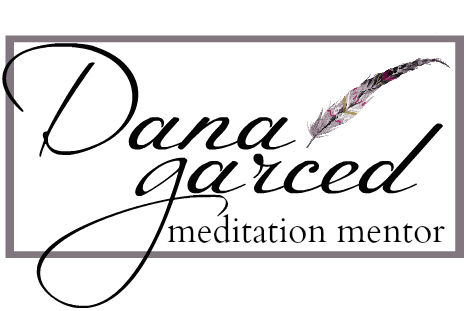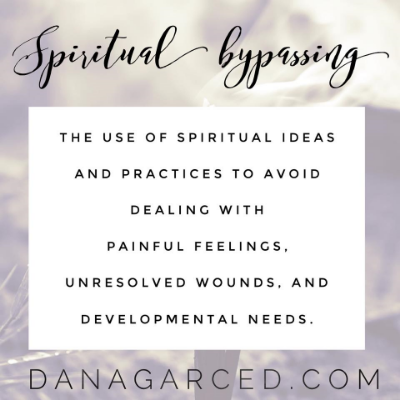Part 1: Calm your Mind and Emotions
/Welcome to the 4 Part blog series "Meditation for Transformation" where I'll teach you my 4 step process to take your meditation practice beyond simple relaxation (and into the realm of deep, lasting life transformation).
So many of us discover meditation to reduce stress, calm an anxious or overactive mind, and experience a deeper sense of relaxation. And there's nothing wrong with that. That's how I found meditation too, and it worked brilliantly! And for years I was content simply using meditation as a tool to help me feel more calm and relaxed.
But eventually I began to feel my practice was more like a band-aid I used to hide difficult emotions, rather than a tool to bring me long-term healing and transformation.
I started noticing the same patterns repeating in my love life, with my work, and in other aspects of my life causing the (emotional) shit to hit the fan often. And while meditation would make me feel better temporarily, it wasn't helping me feel any less stuck or more fulfilled overall. And I realize now, it was because I wasn't tapping into the full potential of meditation to get to the root of my issues, understand them, and heal them. I was falling into a pattern of what psychologist, John Welwood, called "spiritual bypassing".
"Spiritual bypassing" is a tendency to use spiritual ideas and practices to avoid dealing with painful feelings, avoid facing unresolved emotional issues, and neglect developmental needs.....all for the goal of "awakening" or "liberation". Welwood saw this tendency occurring in Buddhist communities as well as in everyday people who used meditation and other spiritual practices. Sometimes people were (unconsciously) trying to rise above the raw and messy side of their humanness before they fully faced and made peace with it. And like me, they continued to find themselves feeling varying levels of stuck, unhappy, and unfulfilled.
“Nothing ever goes away until it has taught us what we need to know.”
So this 4 week series is going to teach you the simple, but powerful 4 step process I discovered (and have been using for years) to use meditation to calm your mind AND create the type of deep transformation in your life that leads to lasting peace, fulfillment, and happiness. If you follow these 4 steps, you'll have a simple process and the tools to calm your mind, uncover why you're feeling stuck in repetitive patterns, heal those patterns, and actively create the life circumstances you desire.
Ready to dive in??
Step 1: Calm your Mind and Emotions
There are many types of meditations and some are better than others at each stage of the transformation process. And throughout this 4 part series you'll learn a new meditation technique for each step in the process. Today you're going to learn the root skill for any type of meditation (and a simple practice to cultivate it).
We live in a noisy society which contributes to feelings of constant overwhelm, stress, and overstimulation....like we have to be on all. the. time! So no matter how far along your meditation journey you are, it's important to get back to the basics and continuously work to keep your mind calm, clear, and able to focus in order to balance out the constant chaos going on around you 24/7.
Your mind is your greatest asset for creating your ideal life, simply because it's responsible for your decision making ability.
So keeping your mind strong, healthy, and clear is super important to consciously making the choices that will lead you to the circumstances and life you desire (and to stop making the choices that are keeping you stuck). And since we often take action based on our emotions, being able to manage your turbulent emotions (and not react unconsciously from them) is equally important.
“Great things can not be accomplished until we have achieved inner stability not disturbed by ambiguous situations.”
Remember, healing your mind is not about stopping thoughts or avoiding undesirable emotions. It's simply about using your mind more efficiently and intentionally, to create more joy and fulfillment in your life.
A healthy mind focuses on the present task or moment so you can approach it skillfully, with all your resources. It reflects on the past to search for clues around what habits you need to shift, so you can be more aligned with your desired circumstances. And it projects into the future when you need to plan, set goals, or visualize your dreams.
A healthy mind is powerful! And now I'm going to teach you a simple meditation technique (also known as the root skill to all meditation) to cultivate a clear and healthy mind.
The Concentration Meditation Technique (Part 1: Calm your Mind)
“First we need to stop the invasion of feelings and thoughts, which deplete our strength in meditation, and cultivate the capacity, the power, of concentration. Concentration is the first practice of meditation.”
Many people think that they're great multi-taskers, but the truth is, the mind actually works most efficiently when it's focused on one task at a time. The concentration technique is a very basic meditation technique that will help your mind maintain focus on the task or moment at hand, and allow distractions to pass by, without pulling you in. This is an important skill both on the cushion (during any meditation), and off the cushion (in life).
Concentration is a skill that you should have some level of proficiency with, before you move on to other meditation techniques, especially if you find your mind is always very restless during meditation. I usually start all my other meditation practices with a few moments of concentration to help calm and focus my mind and enhance my practice. If you don't cultivate concentration and try to jump right into other types of meditation, you may feel frustrated with your lack of focus and perhaps even feel that meditation isn't for you.
But the truth is, meditation is a natural ability that everyone is capable of.
So just to reiterate, if it feels especially hard to calm your mind and focus and you're constantly distracted by thoughts or feelings that take you out of the present moment, (or if you feel meditation isn't for you because of this) this technique is especially important for you. Please don't underestimate the power of concentration!
This excerpt from one of my e-books outlines a simple concentration practice. And there's also a link to a guided practice below.
***Note that the intention of this meditation is NOT to avoid distracting thoughts, emotions, etc. In fact, step 5 and 6 which ask you to notice when your mind has wandered and then gently bring it back to the breath, are the key pieces to strengthening your mind. Each time you bring your wandering mind back to the breath, you are strengthening your ability to focus and concentrate your mind (ie. healing your mind), bringing you 1 step closer to transforming your life!
“Once you develop even a little concentration- which happens after a relatively short period of meditation- you find it enhances all other methods of spiritual practice.”
As your concentration and focus grow on the cushion, you'll also notice yourself naturally becoming more mindful (or focused on the present moment) off the cushion, in your everyday life. As you continue your practice, you'll experience more peace and many things in your life may start to shift naturally.
The Concentration Meditation Technique (Part 2: Calm your Emotions)
In order to break old patterns that are keeping you stuck and create new more ideal circumstances in your life, the first thing you've gotta do is stop making decisions and taking action from a reactive, emotionally charged state.
It's not your turbulent thoughts and emotions that create your life, but the actions you take from that ungrounded and reactive space that do.
The same breathing practice we discussed above can also be used to calm your emotions, except rather than allowing your breath to be how it is naturally, you can actively slow and deepen your breathing in this practice. Your breathing can affect your parasympathetic nervous system, which means it has the physiological power to shift your body from a stressed state to a more relaxed state.
So when you find yourself in an anxious or emotionally turbulent state, rather than reacting, just pause and bring your attention to your breath. If it's shallow, work on deepening it (into the belly area) until you feel your heart rate start to slow, and your emotions begin to calm down. If they don't calm down right away, don't panic, just have patience.
Difficult emotions are sometimes unavoidable but will always pass given time and when you stop fueling them with chaotic thoughts. The key is to avoid making important decisions or taking actions during these emotional times.
“When you own your breath, nobody can steal your peace.”
Creating more mental and emotional calm can often naturally allow things to shift in your life. Stress can start to melt, you'll start to make better decisions, and you'll likely experience some desired changes. But there will also likely be things that don't start to shift naturally. And this is exactly what you'll learn during the next 3 steps (and practices) of the "Meditation for Transformation" process. But for now, here's your homework.
Take Action:
Do the above concentration practice for 5-10 minutes 1-2x a day, to start to cultivate a more focused and calm mind.
Practice pausing (vs reacting) anytime you experience turbulent emotions. And then do a few minutes of the concentration practice to calm your emotions down.
Disclaimer: The practices and tips in this training series are based on my own experience with anxiousness and difficult emotions- not necessarily panic attacks or more severe or debilitating mental/emotional conditions. They can still help, but I recommend consulting with a doctor if you experience any debilitating emotional conditions.


